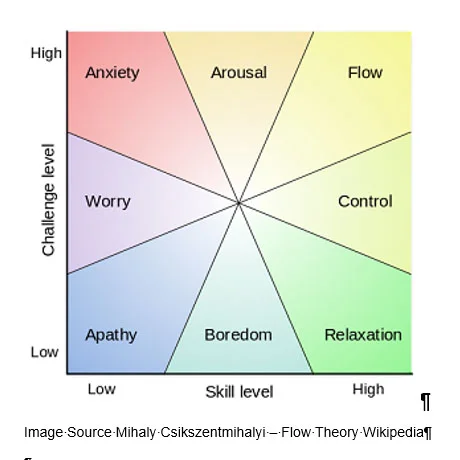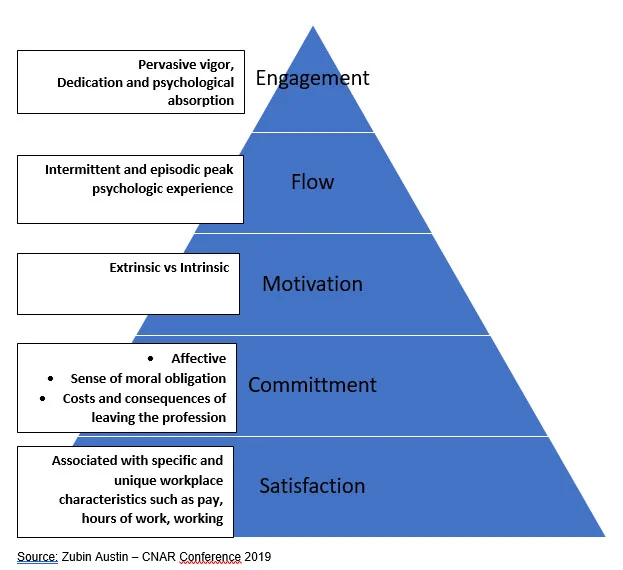In the world of continuing competence, there are a plethora of meanings attached to the word “competence” that can be deconstructed through discourse analysis. Discourse analysis involves examining language to determine how meaning to a word is constructed at a given time and place in a culture. It is a sociocultural analysis.
The words “continuing competence” have been included in the lexicon of regulation for less than 30 years. Prior to that you will not find it used in discussions of regulation or education. Around 2012, Brian Hodges brought to the attention of regulator’s and educator’s various discourses attached to the word “competence".1 His analysis focused on these words:
- Knowledge
- Performance
- Psychometric
- Reflection
- Production
- Quality Improvement
Now, gaining popularity is the engagement discourse, coined by Zubin Austin, another thought leader in the area of continuing competency.2 Zubin is a practicing pharmacist and academic who adds MBA, MISc, MEd, and PhD to his name.3 Over the years, in his spare time, he has helped the Ontario’s College of Pharmacists evolve their Quality Assurance program (akin to Alberta’s Continuing Competence Program).
According to Austin, the engagement discourse of competence doesn’t focus on a list of skills or abilities per se. It relates competence to engagement, competency drift, professional identity, and flow.3,4
Austin believes health-care professionals are intelligent individuals, and if over their career continuum, they remain motivated and engaged, they will remain competent. He dislikes the discourse attached to the term “competent” because it is a binary term, so the opposite is “incompetent”.4
He has some compelling arguments to support his ideas.
- First, an anomie is a condition where there is a breakdown of social bonds between an individual and community.5 It is produced by the social systems we live in.4,5 It was first discussed in 1893 in a study of workers in a factory production model.5 It is a system that produces a lack of a “social ethic” which in turn produces a moral de-regulation and blind rule-following.3,4 “A society with too much rigidity and little individual discretion produces a kind of fatalistic suicide when a person is too psychologically rule-governed.”3
With this concept in mind, Austin challenges us to consider the health-care system we work in.4 How many workers are disconnected from their work and are just showing up to collect a pay cheque? What about the systems we create as health profession regulators?4 Does blind rule-following create disengagement?
- Second is “competency drift”.2,3,4 Austin believes that health-care professionals don’t intentionally set out to become incompetent. Over time they may drift. For some reason or another they may gradually fall behind, perhaps it is because of the system they work in, the work they are assigned to do, or the rapid pace of technology, where if they don’t get the hang of one technological advancement, it doesn’t provide the foundation for another, and they become out of date. Whatever the cause, over time they completely fall behind.
As Austin described drift,4 it brought to mind trying to navigate out of my son’s x-box controller just so I can watch T.V. Often he has to help me. Sometimes, I get so frustrated trying to navigate the system, I disengage and go read a book.
- Third are “flow” and “engagement” which draws on flow theory.2,4,6,7
"The best moments in our lives are not the passive, receptive, relaxing times… The best moments usually occur if a person’s body or mind is stretched to its limits in a voluntary effort to accomplish something difficult and worthwhile." ~ Mihaly Csikszentmihalyi (1990, p. 3)8
Flow is that special moment in a health-care professional’s work day or career, when one is so preoccupied with the joy of participating in their current work task that time and space are suspended. The professional is so caught up in what they are doing they have lost their sense of time.4,6 The caveat is that to achieve flow the conditions must be met where the task must be structured so that is combines the right mix of skill and challenge. To achieve a flow mindset there must be a challenge feedback loop and one must be undistracted.6,7
Austin says flow is when “we as health-care professionals are firing on all pistons and performing our best”.4 He thinks as health-care professionals this is what we should be striving for. If we experience flow, we are connected to our work, our profession and have self-actualized in the competency realm.
Here is a graph showing skill vs challenge to illustrate where to find flow. Flow is achieved when high challenge and high skill level are perfectly matched.6,7,8 For example if a high challenge task is given to someone with low skills it creates anxiety, whereas if a low skill task is given to someone extremely skilled it creates boredom.6

The following is Austin’s Engagement Pyramid (currently in peer review with the publication Research into Social and Administrative Pharmacy).9 Do the systems we work in encourage professionals to function at the bottom of the pyramid or the top of the pyramid? Satisfaction is when professionals come to work for the pay cheque (it’s an okay job, I will stay). The pyramid progresses upward towards engagement where they experience sustained vigor and accomplishment with the work they do.

Many of the symptoms and contributing factors to burnout resonated with my understanding of anomie and engagement. Austin’s model combines sociology and psychology and focuses on the positive, while these burnout resources tend to focus on the psychology of the individual:
- Ignitephysio podcast: Therapist burnout and the Need for Self-Regulation
- Burnout Among Physiotherapists
I wondered how many physiotherapists find the system they work in causes burnout and/or dissatisfaction or have personal issues that impede their ability to work. I worry about them because they may not even be on the engagement pyramid.
So, if you aren’t on the pyramid then go ahead, read up on burn out, mindfulness, happiness, or leadership. Do whatever you need to get you back onto the engagement pyramid, and for those already on the pyramid spend some time to move upward to that state of flow – combat burnout by finding that special moment that you as a health-care professional find deep, significant meaning in the work you do.
We have structured the DO.LEARN.GROW Self-Selected Activity so there is nothing stopping you from sharing what you’ve learned and how this learning impacted your work life in your Practice Improvement Record.
Comments, questions Contact the Continuing Competence Program competence@cpta.ab.ca 780.438.0338, 1.800.291.2782
- Hodges B and Lingard L (eds). The Question of Competence: reconsidering medical education in the twenty-first century. 2012. Ithaca NY. ILR Press.
- Health Professions Council. Preventing Small Problems from Becoming Big Problems in Health and Care. 2009. London. Author. (Zubin Austin co-author/consultant) Accessed November 26 2019 at https://www.hcpc-uk.org/globalassets/resources/reports/preventing-small-problems-from-becoming-big-problems-in-health-and-care.pdf
- Austin Z. Competency 101. Continuing Competence Interest Group Conference. (2017)
- Austin Z., Continuing Competence. Master Class Canadian Network of Agencies for Regulation Conference (2019)
- Wikipedia. Anomie Accessed November 26 2019 at https://en.wikipedia.org/wiki/Anomie
- Study.com. Mihaly Csikszentmihalyi: Flow Theory & Works Accessed November 26 2019 at https://study.com/academy/lesson/mihaly-csikszentmihalyi-flow-theory-works.html
- The pursuit of happiness. Mihaly Csikszentmihalyi Accessed November 26, 2019 https://www.pursuit-of-happiness.org/history-of-happiness/mihaly-csikszentmihalyi/
- Csikszentmihalyi, M Flow: The Psychology of Optimal Experience. New York, NY: Harper and Row. (1990).
- Austin Z. personal communication November 20 2019
- Physiotherapy Alberta College + Association. Burnout among physiotherapists. Accessed November 22 at https://www.physiotherapyalberta.ca/physiotherapists/career_work_health_resources/burnout_among_physiotherapists
- Ignite Physio. Therapist burnout & the need for Self-Regulation April 29, 2019 accessed November 22 at https://ignitephysio.ca/podcasts/episode-46-exploring-the-topic-of-burnout/




